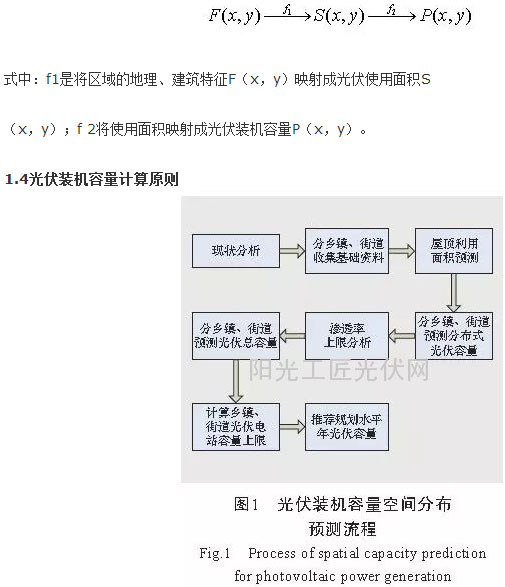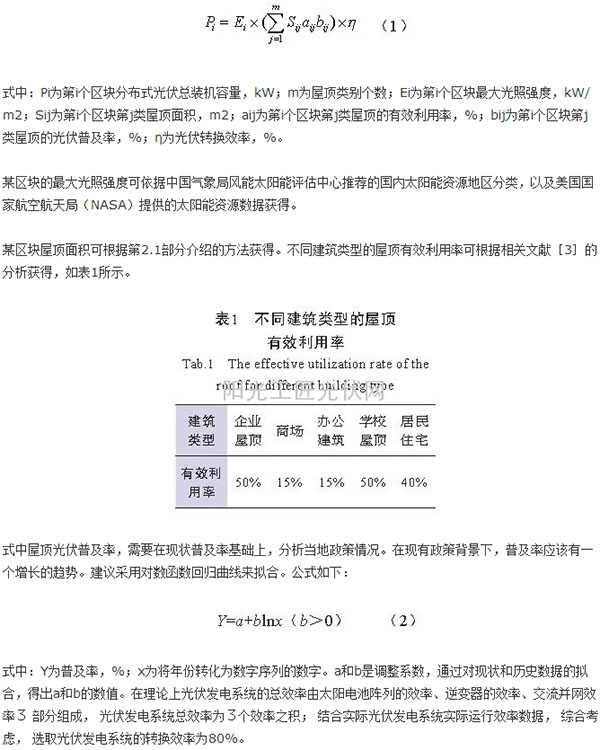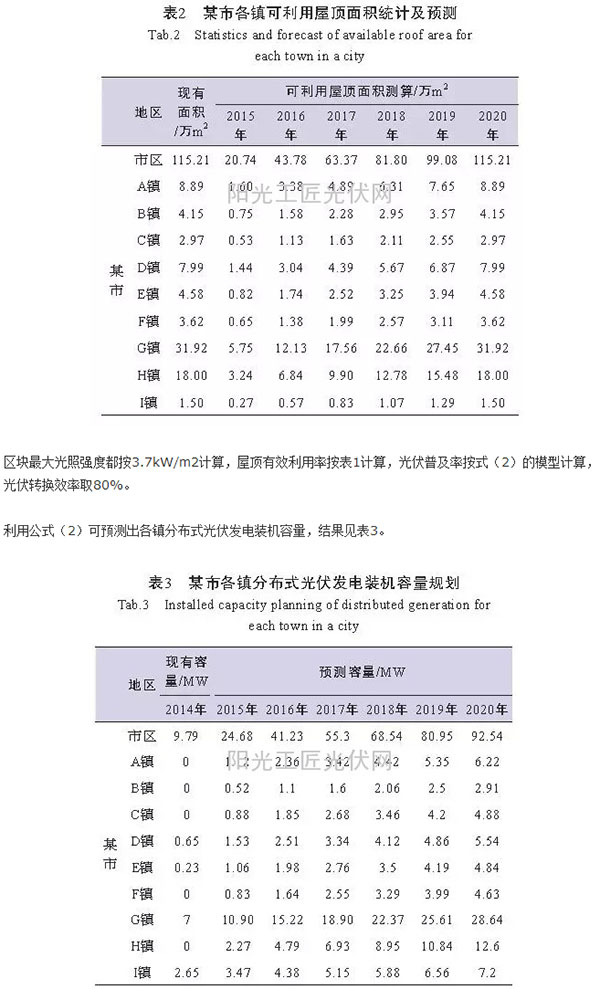According to the National Twelfth Five-Year Plan for Solar Power Development, by 2020, the installed capacity of distributed photovoltaic planning will be 27 million kW, and the planned installed capacity of ground-based photovoltaic power plants will be 20 million kW. The planning and recommendation of distributed photovoltaics is mainly focused on “building roofs in urban industrial parks, economic development zones, and large public facilities in the eastern and central regionsâ€. The ground-based photovoltaic power stations are mainly constructed in “Qinghai, Gansu, Xinjiang, Inner Mongolia, Tibet, Ningxia, Shaanxi, and Yunnan. , and some suitable areas in North and Northeast China."
Photovoltaic power generation has developed rapidly in recent years. Distributed photovoltaics have the characteristics of small capacity and local consumption. They have less impact on the power grid and are easily connected to the power grid. Ground PV power stations are relatively difficult to access because of their large capacity and local access. The power grid is complicated. This paper considers the planning of photovoltaic power generation in the eastern region. Based on energy efficiency considerations, priority should be given to the development of distributed photovoltaic power generation projects. First, the spatial distribution of distributed photovoltaic capacity should be predicted by combining the relevant models and data through block division, roof resource prediction, and then Through the maximum permeability, the photovoltaic power generation capacity that can be opened in the region can be predicted, and the capacity ceiling and space layout of the ground-based photovoltaic power plant can be calculated.
1 Principles and methods for planning of space layout of photovoltaic power generation
Conduct PV power space layout planning. First, through the investigation and analysis of the status quo of roof resources, land and water resources and other factors, pre-judgment can build the placement points of distributed photovoltaic and ground-based photovoltaic power stations; then, according to the prediction of space load, roof and other resources, Combined with the selection of permeability at different stages of development, the spatial layout of distributed photovoltaic and ground-based photovoltaic power plants at each planning level is estimated.
1.1 Photovoltaic Power Generation Project Classification
Photovoltaic power generation projects mainly include distributed photovoltaic and ground photovoltaic power stations. At present, distributed photovoltaic projects mainly use photovoltaic panels in roof construction, and can also be constructed in accordance with building integration through photovoltaic thin films and building glass curtain walls. However, due to cost and other reasons, rooftop PV is still the main mode of utilization of distributed photovoltaics.
Distributed photovoltaic power generation is mainly used to absorb some of the electricity and the remaining amount on the site. It is also possible to select "full-scale Internet access" or "all self-use" methods. For the eastern region, ground-based photovoltaic power station projects are currently mainly constructed using ground, lakes, fish ponds, agricultural greenhouses, etc., and the amount of power generation is mainly the “full-scale Internet access†approach.
1.2 Space Division Principle
According to the requirements of the “Interim Measures for the Management of Photovoltaic Power Plant Projects†issued by the National Energy Administration, photovoltaic power generation projects are based on the principle of “overall planning, rational distribution, proximity access, and local consumption†and are bound to meet the “closest†and “local†requirements.
The division of space, and the finer the division of space, is more advantageous for implementation. In terms of project approval and consumption estimation, the spatial division according to townships, villages, etc., and the use of this as a unit for the prediction of photovoltaic installed capacity is relatively strong. In conjunction with the work of demonstration towns for photovoltaic power generation applications, basic data, and photovoltaic project reporting processes, it is recommended that spatial distribution planning be conducted for townships and streets.
1.3 Calculation Principles for PV Installation Capacity
The PV installation capacity prediction model is mainly based on the statistics and prediction of the area of ​​the ground or the roof, combined with the characteristics of the local photovoltaic power station construction to calculate the effective area of ​​photovoltaic use, and thus calculate the installed capacity of the PV.
PV installation capacity prediction model:

The main process for predicting the spatial distribution of photovoltaic installed capacity is to calculate the distributed photovoltaic capacity through the calculation of the regional roof resources, and then through the analysis of the permeability, the maximum total photovoltaic capacity that can be opened in the region can be calculated, and the townships and streets can be calculated. Ground photovoltaic power plant capacity.
2 Distributed PV Space Planning
2.1 Prediction of Roof Resources
Make full use of the conditions of the building roof (including affiliated spare space) resources, focusing on the roof area, large electricity load, high power grid supply prices of the development zone and large industrial and commercial enterprises to take the lead in carrying out photovoltaic power generation applications. The sources of roofs include industrial plants, commercial buildings, hospitals and other public facilities, administrative buildings and residential houses.
Among them, the greatest benefit is commercial buildings, but the area of ​​single units is small and the amount of coordination is large. The total area of ​​administrative office buildings and residential houses is the largest, but it involves many subjects and coordination is difficult, and the available roof area is small. Therefore, the most recommended at this stage is the industrial plant, followed by concentrated commercial buildings or hospitals, and the investment in residential housing construction is difficult. Therefore, planning is mainly based on the availability of industrial roofs, followed by public building roofs and contiguous commercial buildings.
On the basis of statistical data on the current status of roof resources, by analyzing the historical data of roof resources, a mathematical model is established to predict the roof area of ​​the planning year. Since it is difficult to collect historical statistical data on the roof area of ​​a township, the increase in the roof area can be easily estimated by the growth rate of construction land in the land use plan.
2.2 Distributed PV Total Installed Capacity Forecast
The total installed PV capacity of a block (township, street) can be predicted by Equation (1):

Calculating according to formula (2), we can get the distributed photovoltaic total installed capacity for each township and street planning level year.
3 Space photovoltaic power plant layout planning
3.1 The upper limit of permeability analysis
Photovoltaic power generation is greatly affected by the weather. With the increase in the number of photovoltaic power supplies and the increase in the penetration rate of photovoltaics, distribution network systems have become more complex. Inappropriate PV capacity and location leads to voltage fluctuations, over-limits and other issues. According to the analysis in [4], “Since the PV capacity penetration limit is calculated based on load and lighting historical data, the PV capacity penetration limit range has a certain randomness between 9% and 33%â€. "Weak power grid photovoltaic ground power station penetration power limit is 16.1%."
Through the simulation calculation of the distributed photovoltaic access of the distribution network in an area in the east, the limit penetration rate is 19.5% to 30% depending on the installation location of distributed photovoltaics. It is generally believed that the penetration rate cannot exceed 30%. Photovoltaic power generation planning recommends that in the near term, the penetration rate should be controlled at 25% and the long-term horizon should be controlled at 30%. If the value exceeds the upper limit, the analysis needs to be performed and the power quality analysis must be carried out, or the scale must be integrated. Higher voltage level Internet access.
3.2 Forecast of Total Installed Capacity of Terrestrial Photovoltaic Power Plants
Based on the forecasted load levels of the planned horizontal year grid plan, the photovoltaic capacity (by township) for the planned horizontal year is calculated through the upper limit of the permeabilities, and the capacity of ground-connected photovoltaic power plants that can be opened after the decentralized PV capacity is subtracted.
4 case analysis
Take the PV capacity planning of each town in an eastern city as an example. First, the area of ​​the roof is counted. Due to data collection restrictions, the planning is simplified to include the statistics of the roof area of ​​the company, and the increase in the roof area is forecasted through the growth of construction land in each region.
In order to facilitate the selection of relevant parameters, the area of ​​the roof resources of each municipality in the city is first classified according to the nature and divided into three categories: public commercial building area, enterprise building area, and residential user roof area. The roof area statistics and calculation results can be used as shown in Table 2.

According to the prediction of power flow of each town in the city (see column 2 of Table 4), and based on the premise of “giving priority to the development of distributed photovoltaic power generation and orderly development of ground-based photovoltaic power plantsâ€, the calculation is based on a PV penetration rate of 30%. See Table 4 for available PV capacity planning results for each town in 2020.

In addition, with the principle of optimal social benefits as the planning principle, the planned ground-based photovoltaic power plant project measures the unit cost of the project by calculating the investment in the power station, matching the investment in the grid, and operating costs, and sorts the projects according to the unit cost, thereby guiding project development. . Photovoltaic projects beyond the space available for open capacity can be consumed through large-capacity 220kV and above voltage level Internet access, or the actual local absorption capacity can be specifically analyzed, and the power quality on the side of the power station can be improved and the grid side can be reinforced. Measures to address local consumption capacity.
5 Conclusion
Photovoltaic power generation planning projects are greatly affected by industrial policies, meteorology, and land resource utilization. Through the formulation of the photovoltaic power generation plan, the development direction and objectives can be clearly defined, and the economical efficiency of photovoltaic power generation can be improved. Through research and exploration of the space layout planning of photovoltaic power generation, the capacity of distributed photovoltaic and ground power stations can be easily determined, and the application scale of photovoltaic power generation can be scientifically determined, effectively protecting the construction of photovoltaic power generation projects.
SUNPLUS MASKING TAPE Professional Automotive High Temperature Resistance. With a high temperature resistant masking tape coated with rubber based and has good stick firmness.
90°C Masking Tapes,Auto Painters Tape,Auto Masking Tape,Masking Tape Auto Painters Tape
GUANGZHOU SUNPLUS TECHNOLOGY CO.,LTD , https://www.sunplussandpaper.com
